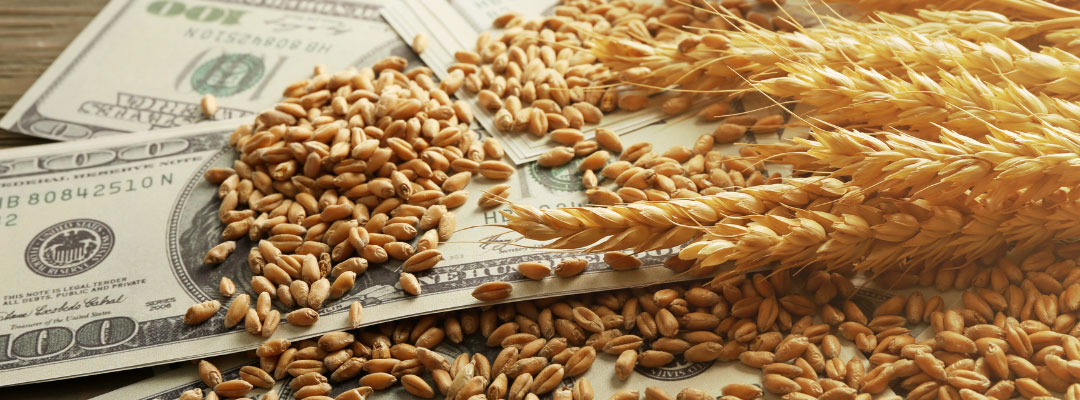Interest rates and the cost of interest isn’t always the first thing on producer’s minds. However, interest expense can be a significant outlay. Headlines about historically low-interest rates, and even zero interest rates in some countries, may lead to the expectation that interest costs may be lower than what is reality. The graph shows that interest rates have come down from the near-term high in the second quarter of 2019. While current rates are at a 20-year low, they are not that different from rates seen over the last 10 years.
One might wonder why interest rates on loans hover around 5% when the Fed Funds Rate is currently at 0.25%. The Fed Funds Rate is set by the Federal Reserve as the rate at which banks can borrow money from each other overnight, and the rate serves as a benchmark for short-term interest rates. The answer can be found in a fairly common loan pricing strategy called cost-plus pricing. This method builds loan pricing (interest rate) from the ground up. It starts with the cost of obtaining loanable funds which can be the price paid on deposits or other means of obtaining loanable funds. To this cost has added the cost of servicing the loan (processing, salaries, etc.), a risk premium to account for the risk of default, and a profit margin. When all four parts of pricing are taken as a whole, the market equates a near-zero fed funds rate to about 5% cost of funds for Agriculture.

Citations:
Federal Reserve Bank of Dallas. 2021. Agricultural Survey. Octoberhttps://www.dallasfed.org/research/surveys/agsurvey/2020/ag2002.aspx#Data
Board of Governors of the Federal Reserve System. July 2021. “Open Market Operations.” Policy Tools. https://www.federalreserve.gov/monetarypolicy/openmarket.htm
Diette, Matthew D. November 2000. “How do lenders set interest rates on loans?” Federal Reserve Bank of Minneapolis. https://www.minneapolisfed.org/article/2000/how-do-lenders-set-interest-rates-on-loans
Knapek, George. “Cost-Plus Pricing?” Southern Ag Today 1(44.3). October 27, 2021. Permalink

